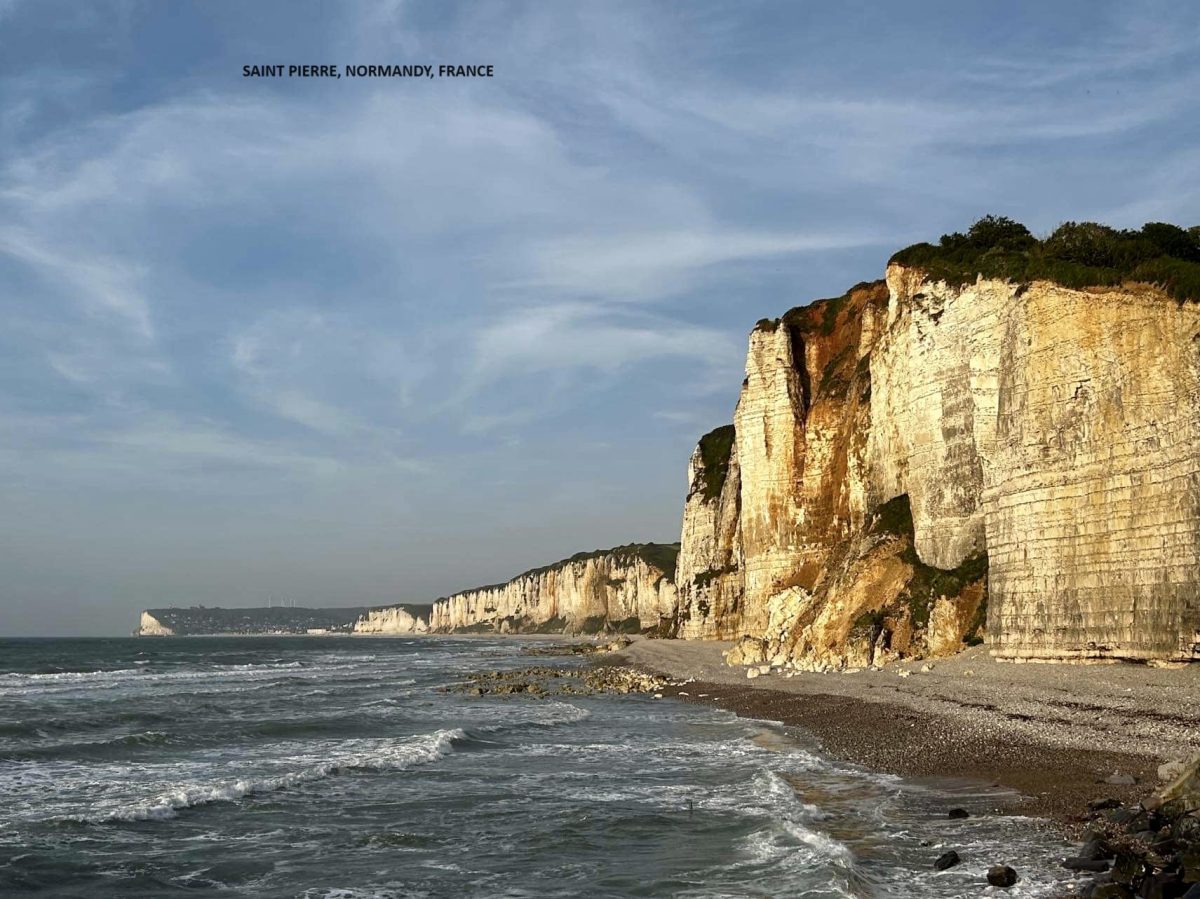We’d booked into the Hotel NH Padova in the city of Padova (Padua in English) for a couple of nights. It’s a nice hotel with plenty of suitable parking and it is within easy walking distance of the old town. You need only walk through the Porta (Ognissanti) o Portello by the River Bacchiglione and you are there.
So many people talk about taking a day trip to Padua while visiting Venice (Venice being just 23 miles to the west) but, trust me, Padova is worth a great deal more than just one day.
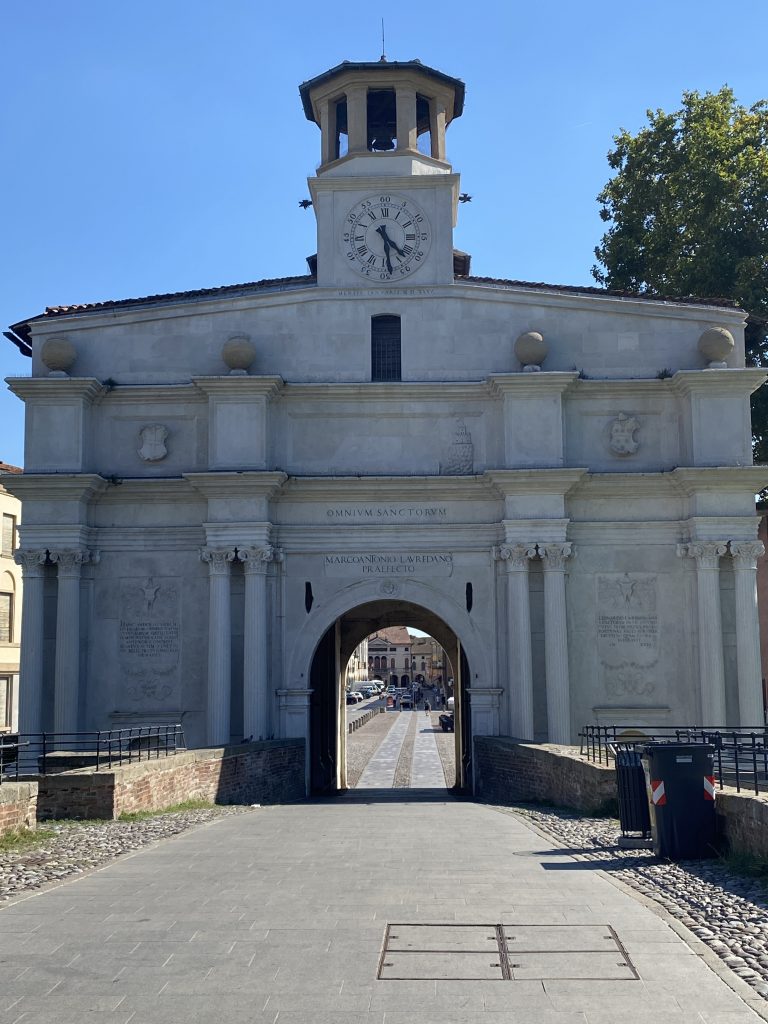
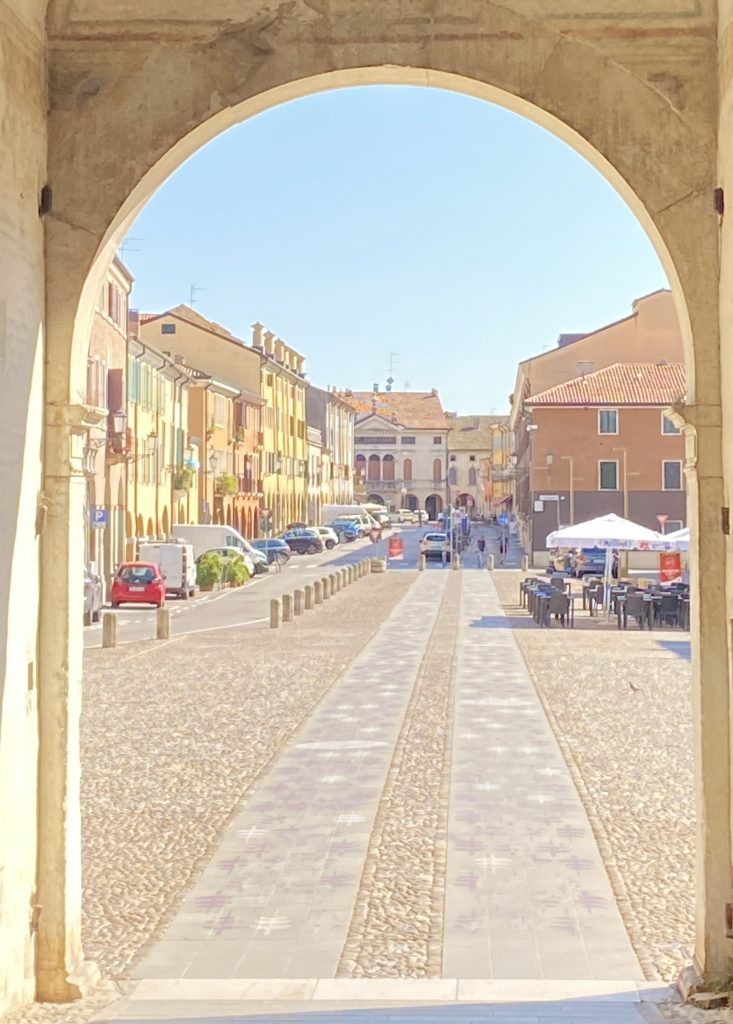
Also known as the city of St Anthony (more about him later), Padova is an ancient city, believed to have been founded by the mythical Trojan hero Antenor (although in reality the city was around long before him). Having said that, most of the city’s early architecture was destroyed either by the Longobards who razed the city to the ground in 602AD or the Hungarians who did much the same in 899AD. It wasn’t until after 1000AD that the city once again began to flourish and it has since become one of the most vibrant cities in Italy with far more than it’s fair share of art, architecture and culture.
Nowadays, Padova’s old town is a mass of narrow porticoed streets and monumental squares criss-crossed by two rivers (the Bacchiglione and the Brenta) and a significant canal system (the most famous of which is the Brenta Canal which stretches all the way to Venice).

The most impressive of the squares, if an elliptical plaza can be termed a square, is the Prato della Valle (Meadow of the Valley) which at 90,000 square metres is the second largest in Europe (after Moscow’s Red Square). This truly monumental and quite beautiful square is used primarily as a public gathering place and to hold huge street markets (every Saturday) but it has also served as a sports venue (speed skating events are held here) and as a music venue and they hold at least two massive fireworks displays here every year.
The square’s centrepiece is a fountain which sits in a large dark green lawn. The lawn is surrounded by a moat and the resulting island, which can be reached by any one of four ornate bridges, is bordered on both sides by 78 marble statues of illustrious men associated with Padova. It doesn’t end there; the whole island is then circled by a seriously wide road which makes for one of the largest and best looking roundabouts in the world.
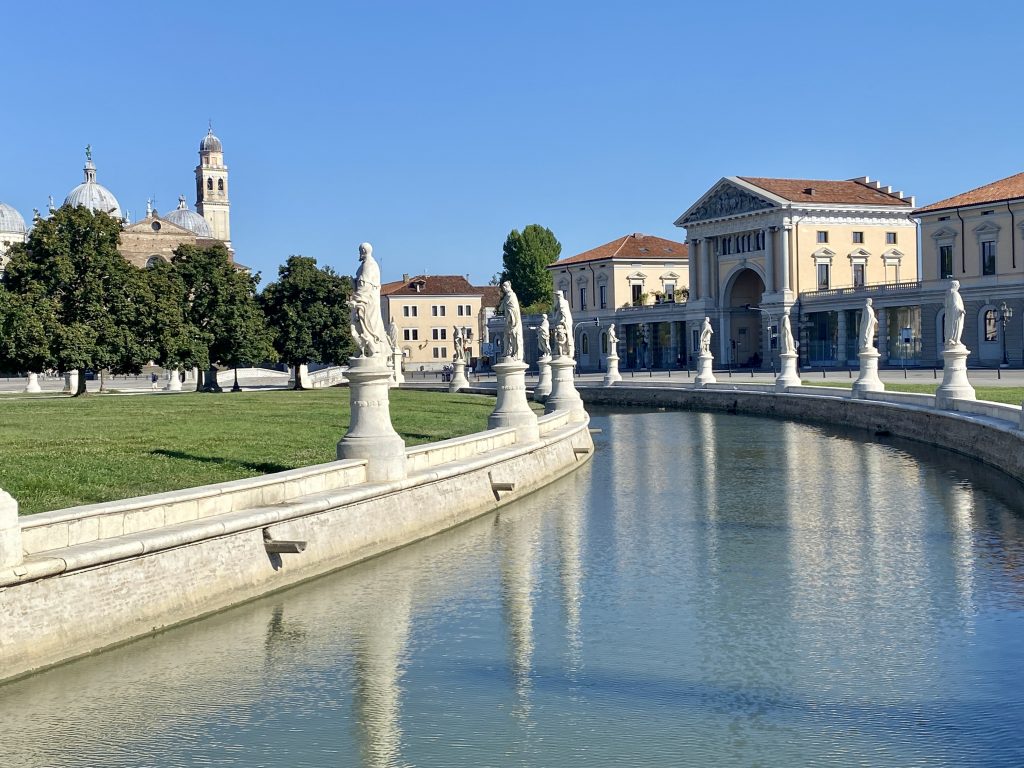
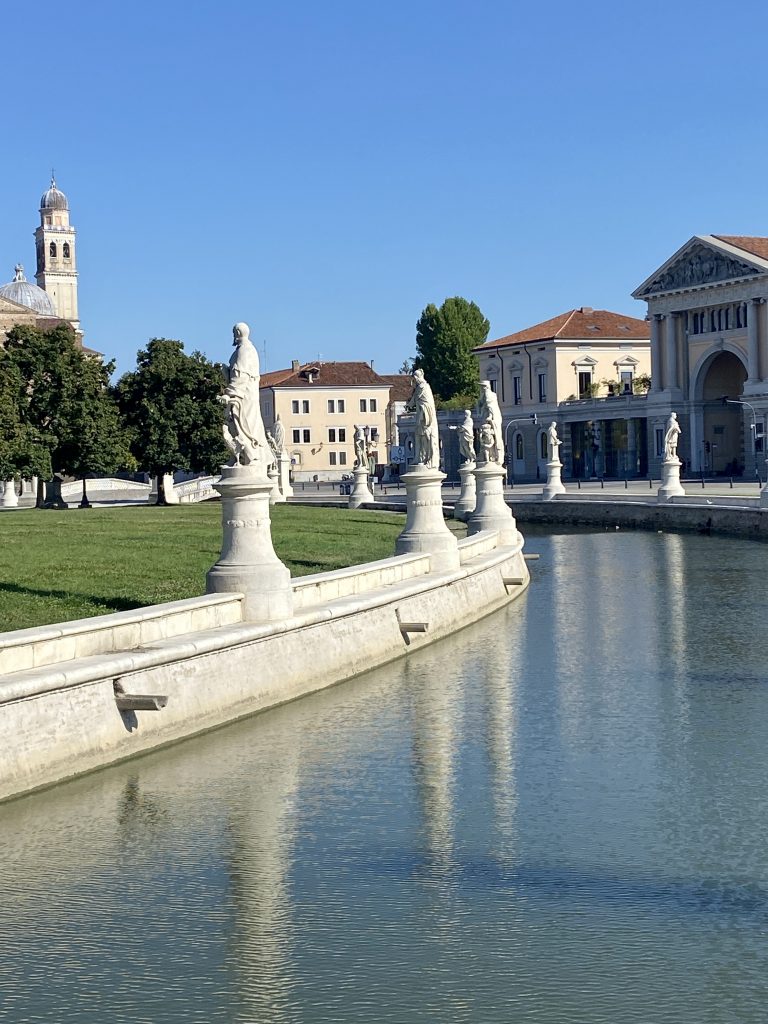

Other squares not to be missed during a visit to to the old town are the Piazza dei Frutti, the Piazze delle Erbe and the Piazza dei Signori which are all very close to each other. The Piazza dei Frutti and the Piazze delle Erbe are separated only by the Palazzo della Regioni (the old town hall) with it’s massive hall and impressive verandas (they call them loggias in Italy) and there is a walkway through the middle of the Palazzo which connects the two squares. The Piazza dei Signori is just to the south of the Piazza dei Frutti and is easily recognised by the Palazzo del Capitano with it’s unique centrepieces of a triumphal arch and the 1344 Torre dell’Orologia (astronomical clock).
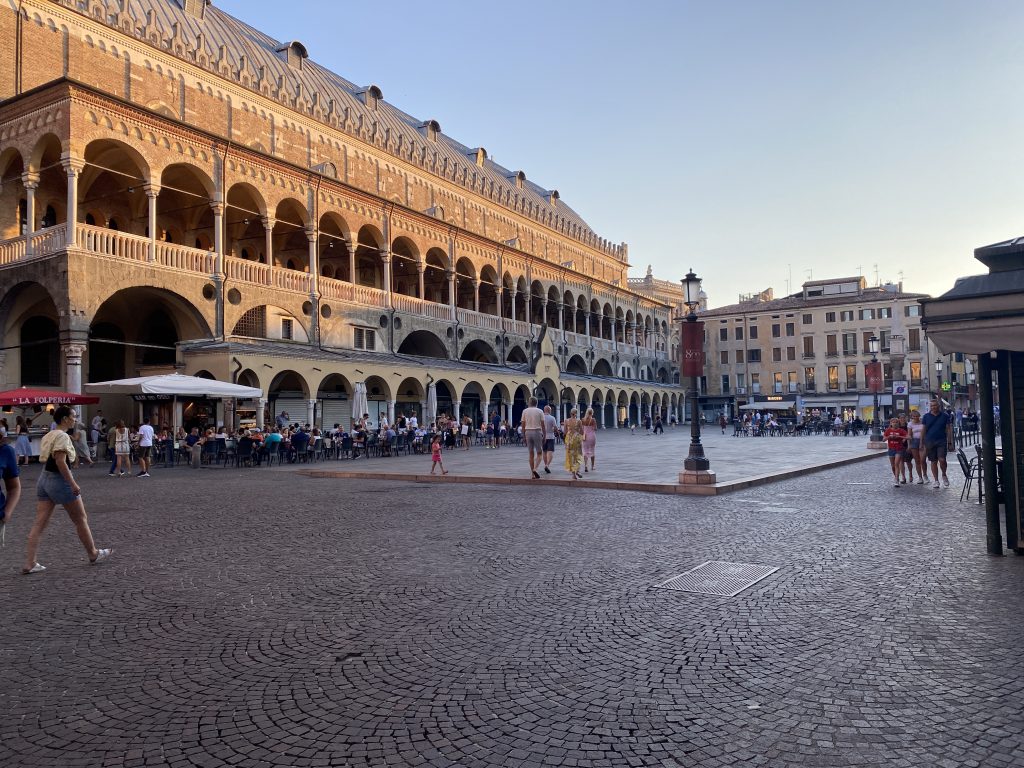
A good time to visit these particular squares is when the street markets are open (i.e. every morning Monday to Saturday inclusive). All three squares are packed with temporary stalls selling just about everything known to man. Even the ground floor of the old town hall is divided into two rows of more permanent stalls selling local foods (predominantly meat, cheeses and fish but, as I arrived, there was also a wonderfully fragrant spice stall).
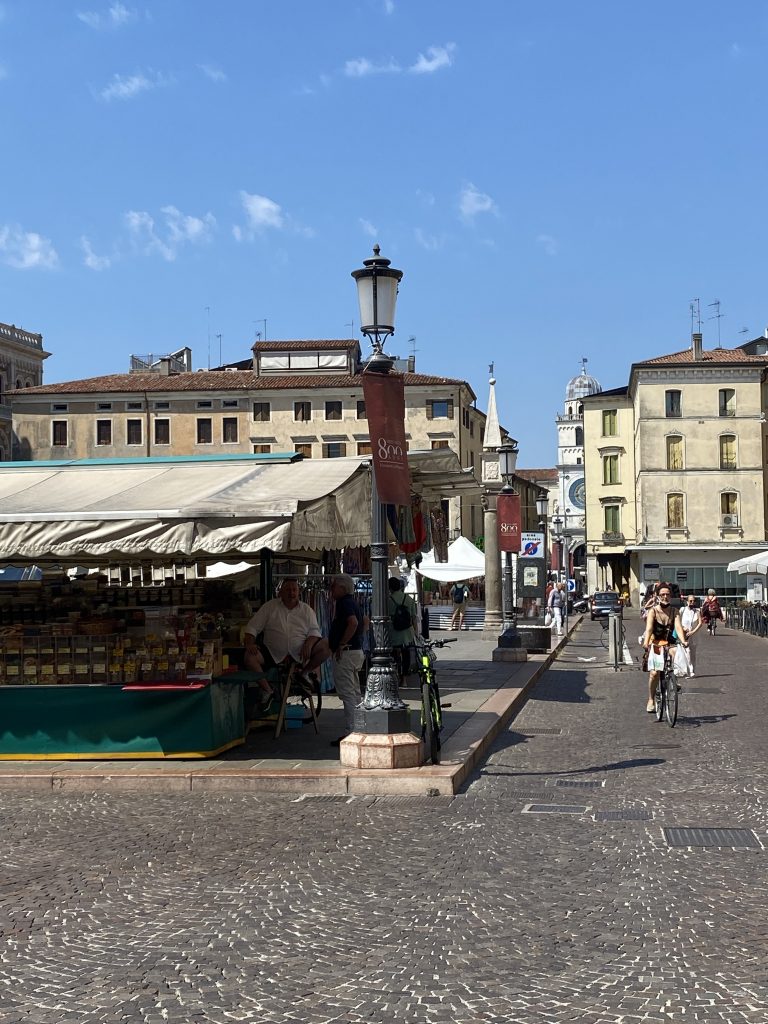
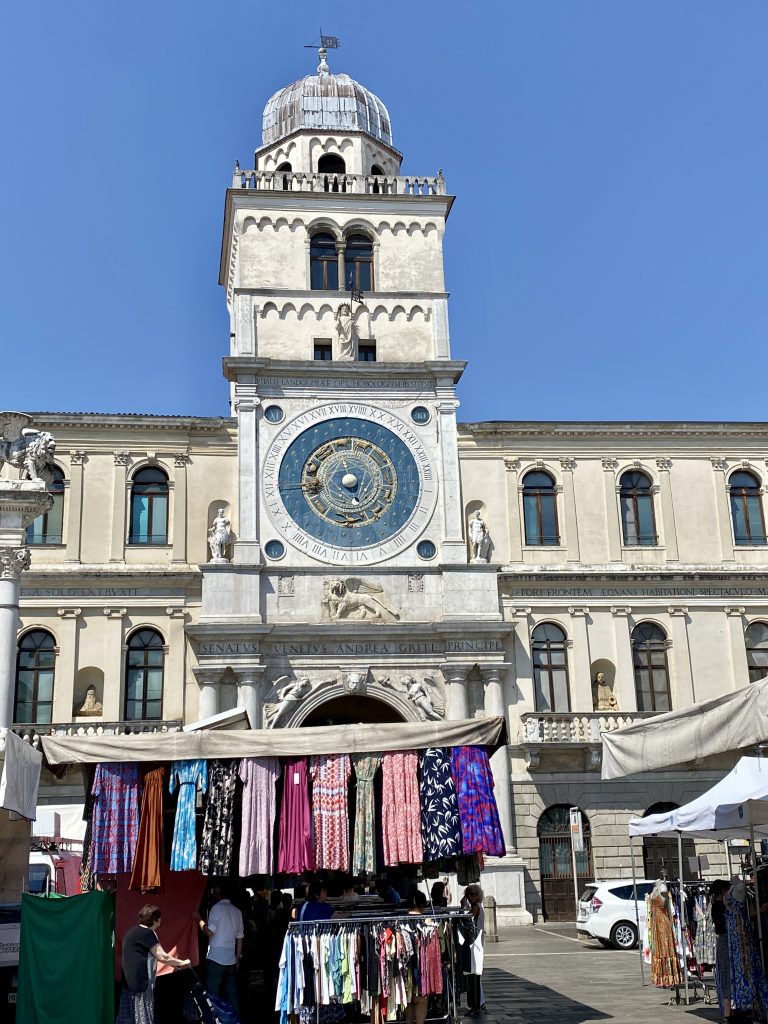

Don’t just visit these three squares in the morning. The stalls disappear during the afternoon and in the evening the squares are filled with tables and chairs as the surrounding restaurants and cafes prepare for their evening trade. The squares are once again packed, this time with diners, and the place buzzes. Our first meal in the city was on the Piazza dei Frutti.
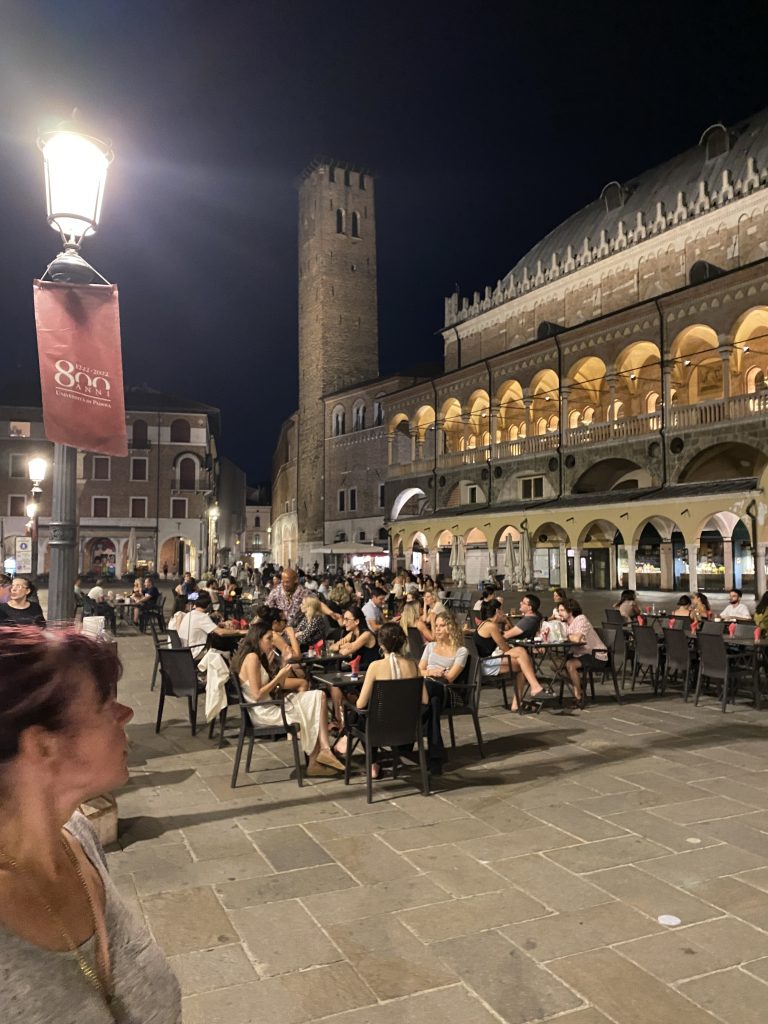
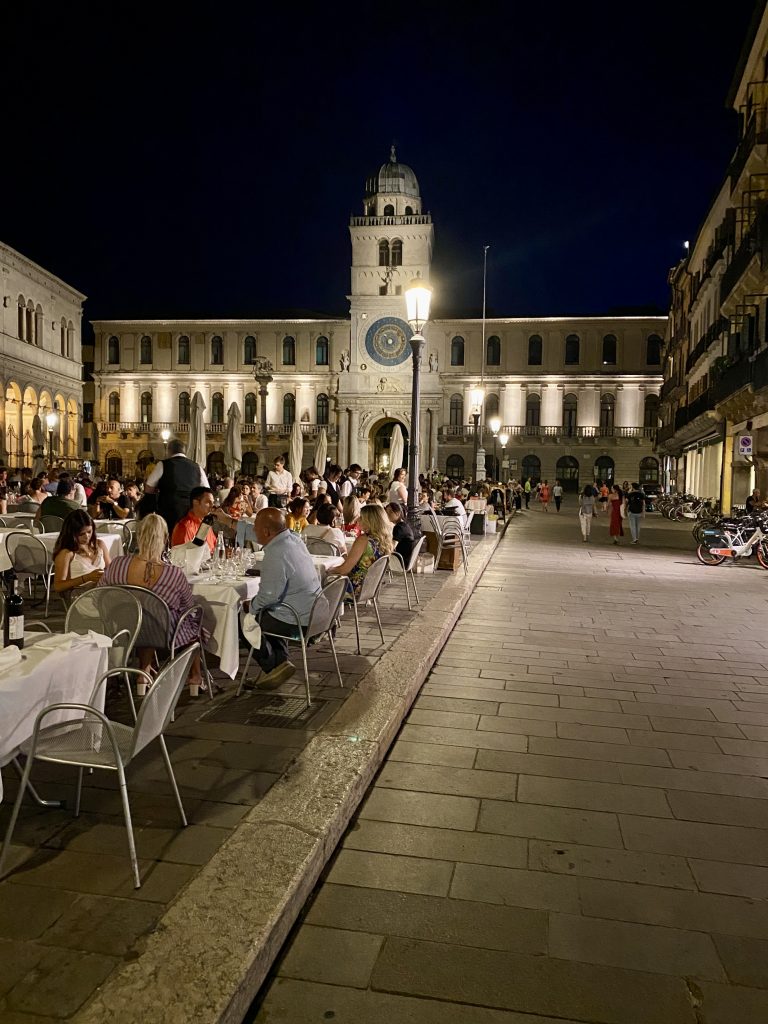
Talking of eating, on our second night in the city we ate at the famous Cafe Pedrocchi. It is famous as a meeting place for academics, artists, writers and revolutionaries (indeed, it was a scene of some anti-Austrian sentiment in 1848 which resulted in shots being fired) but also because it never once closed it’s doors (for much of the time it never had doors) between 1831, when it was built, and 1916. It was open 24/7. We enjoyed our food there but the service was wanting.
A surprisingly high proportion of Padova’s population of 214,000 people are students – there are 60,000 at the University of Paova alone! No surprise then that Padova has a lively night life. We stumbled across some of it while on the way back to our hotel that first night in the city. We saw lights and heard music coming from inside a small park (the Giardini dell’Arena) not far from our hotel. It transpired that the park holds a pop up bar complex and it was packed. We managed to find a spare table for two and sat soaking the atmosphere up over a couple of drinks each into the early hours. It was a great ending to our first evening in the city.
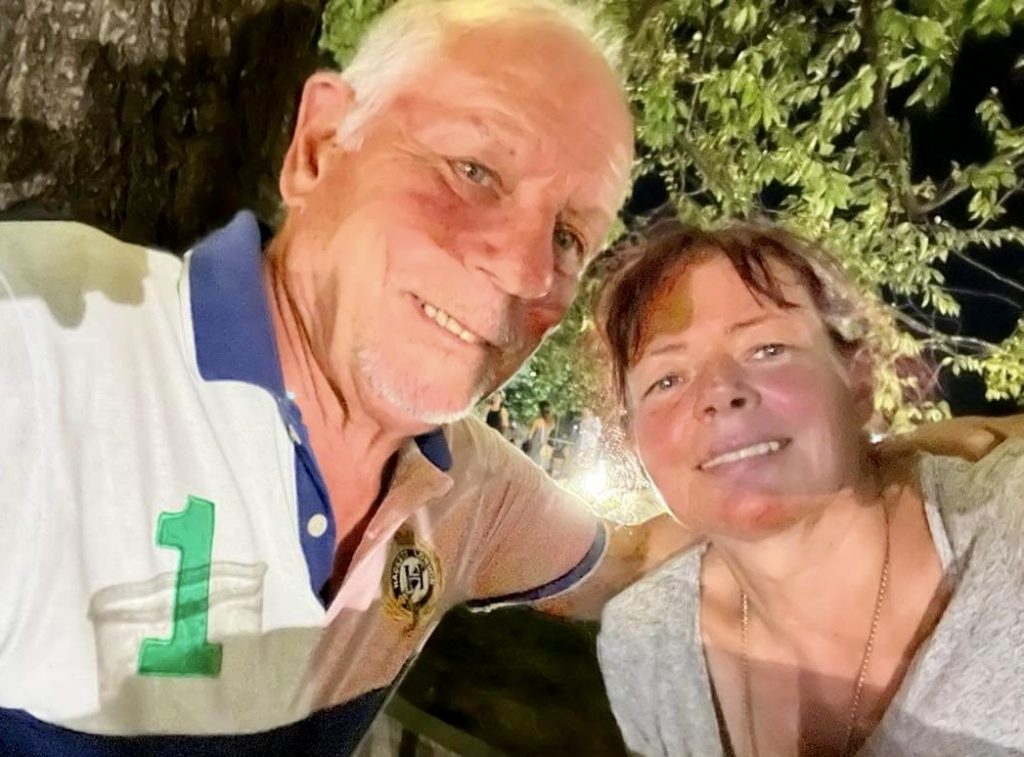
I cannot end a blog on Padova without reference to some of the great churches that fill the city. Without a doubt, the most impressive is the Basilica di Sant’Antonio di Padova or, as it is called locally, ‘Il Santo’. The construction of this huge church began immediately after the death of the saint in 1231 and his body is enshrined there. Everything about this church is extraordinary, inside and out. It is built in a Romanesque and Gothic style and has 8 huge Byzantine domes. Inside, there are numerous chapels and gold and marble is everywhere but the key features are Donatello’s Madonna and Child on the high altar (he was in Padua 10 years working on both the Madonna and Child and on the large equestrian statue of Gattamelata which is on the square outside the church) and some artwork by Titian.
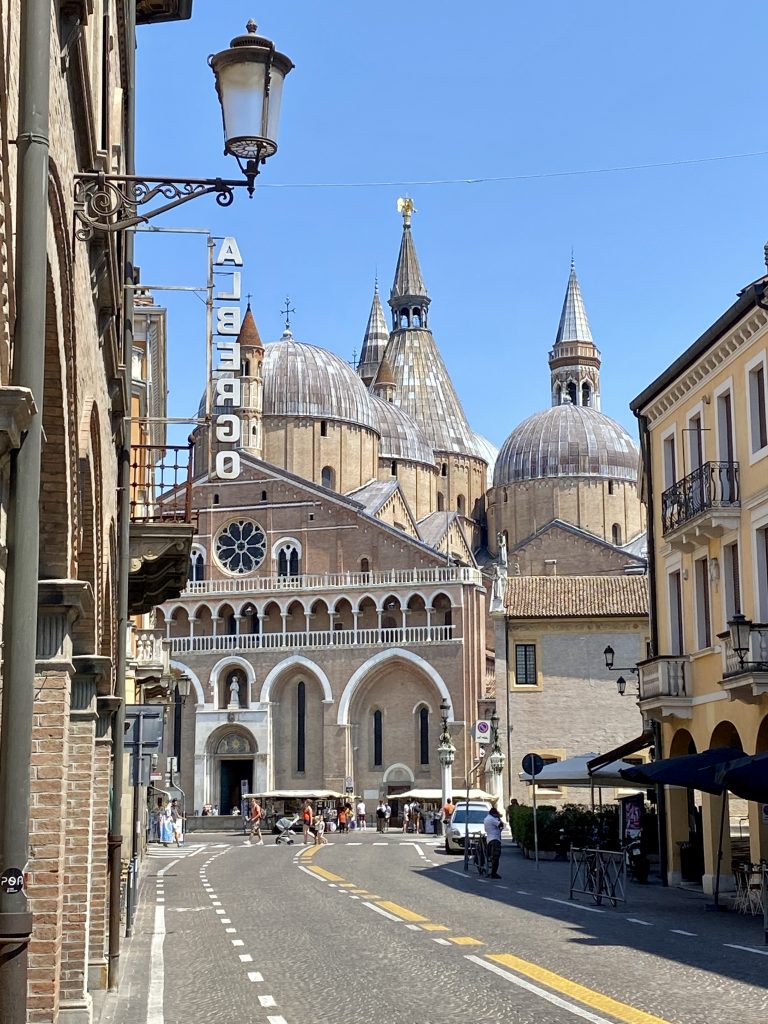
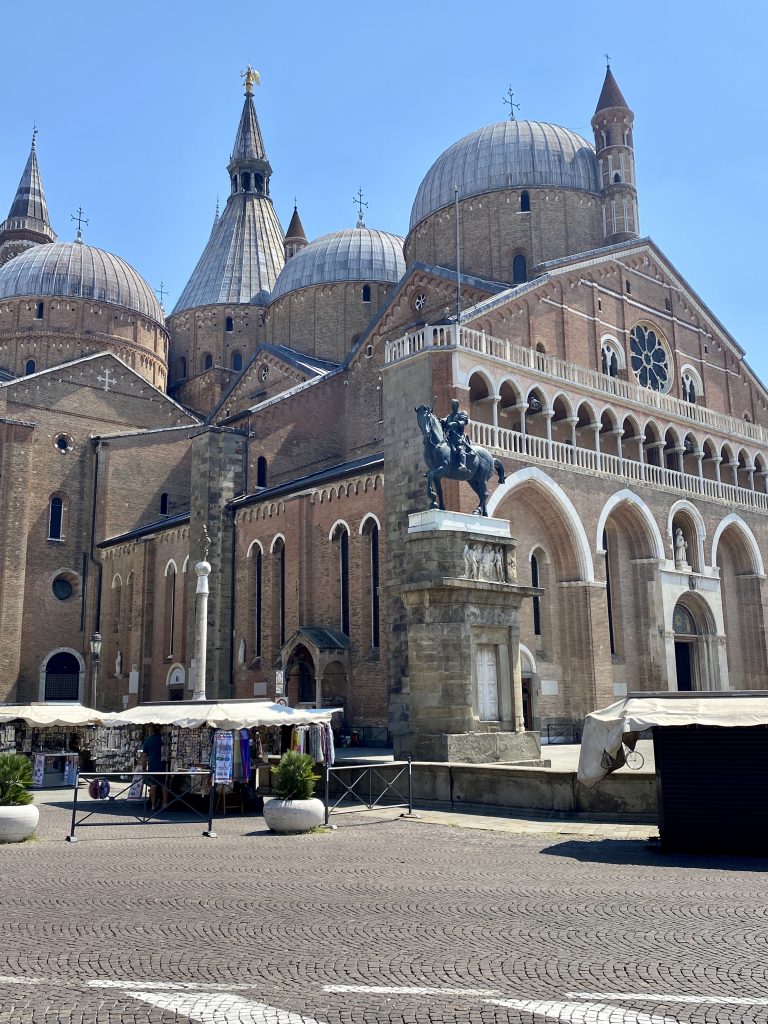
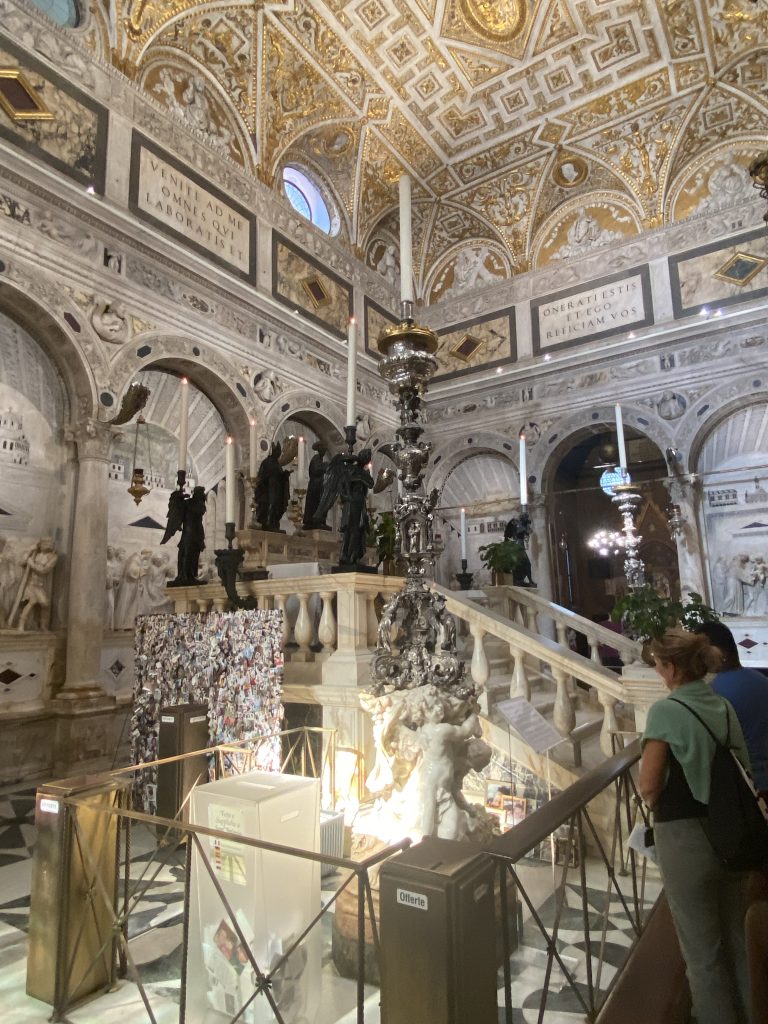
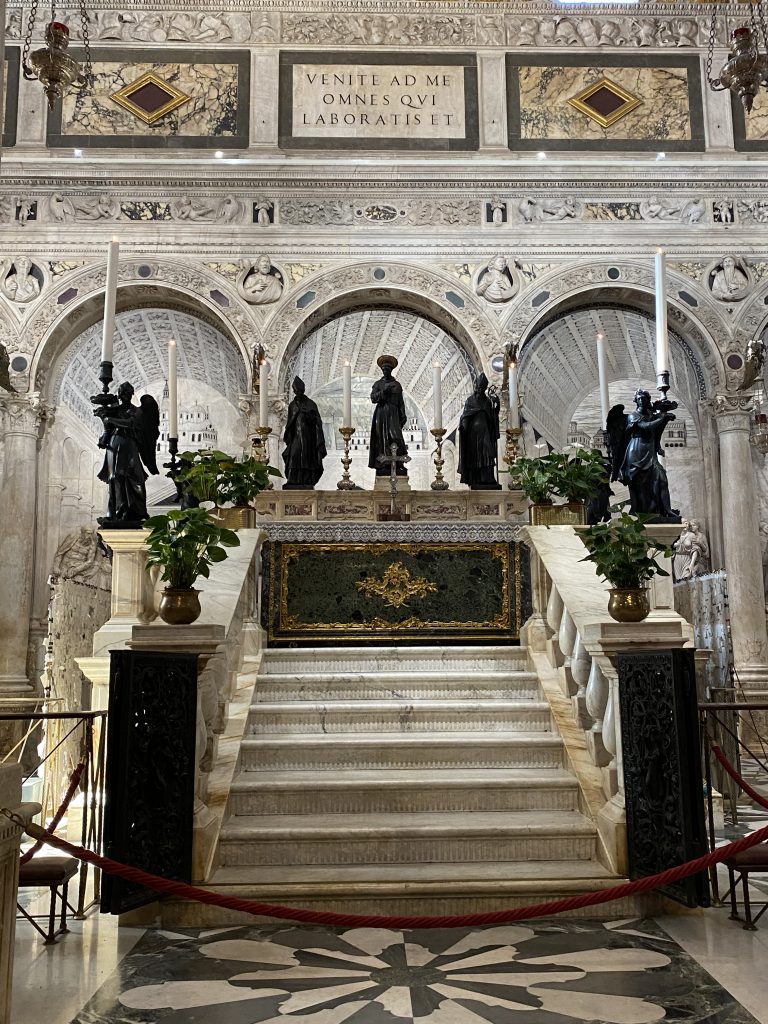

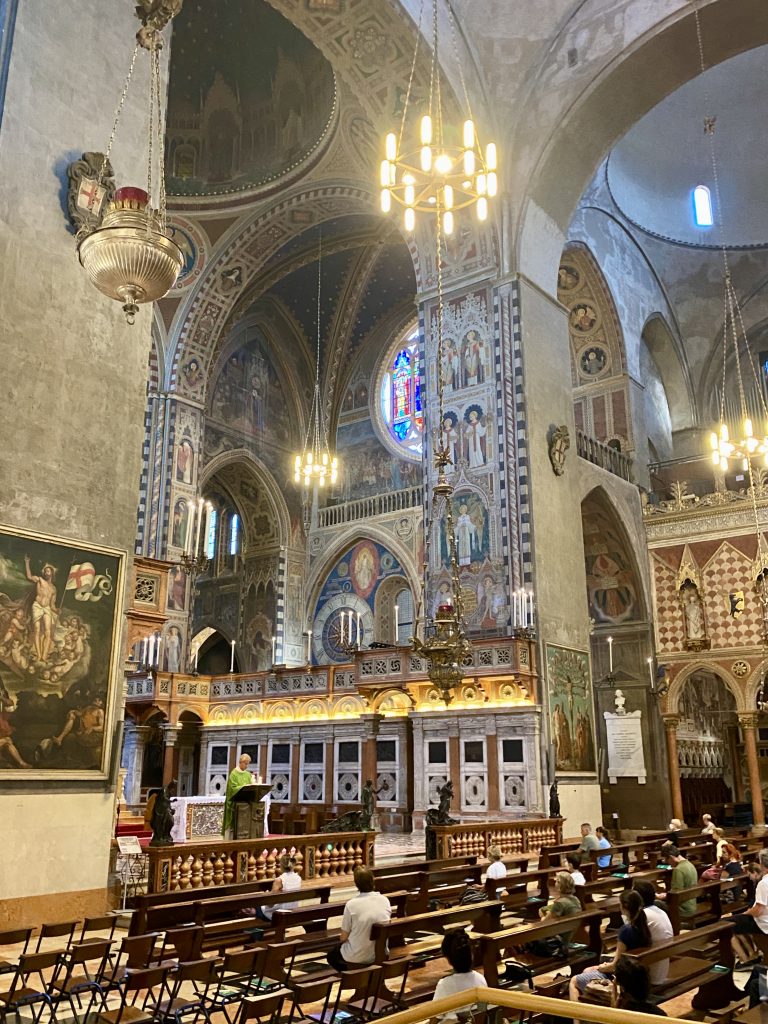
Other churches worth seeing in Padova include the Capella degli Scrovegni (or Scrovegni Chapel) which holds a Giotto Masterpiece (being his series of frescos depicting stories from the bible) but, you need to pre-book to access this church and numbers are very much restricted) and; the nearby 13th/14th century Eremitani Church with it’s wonderful wooden ceiling and; a very small church I stumbled upon and really liked, the Sant Tomas Becket.
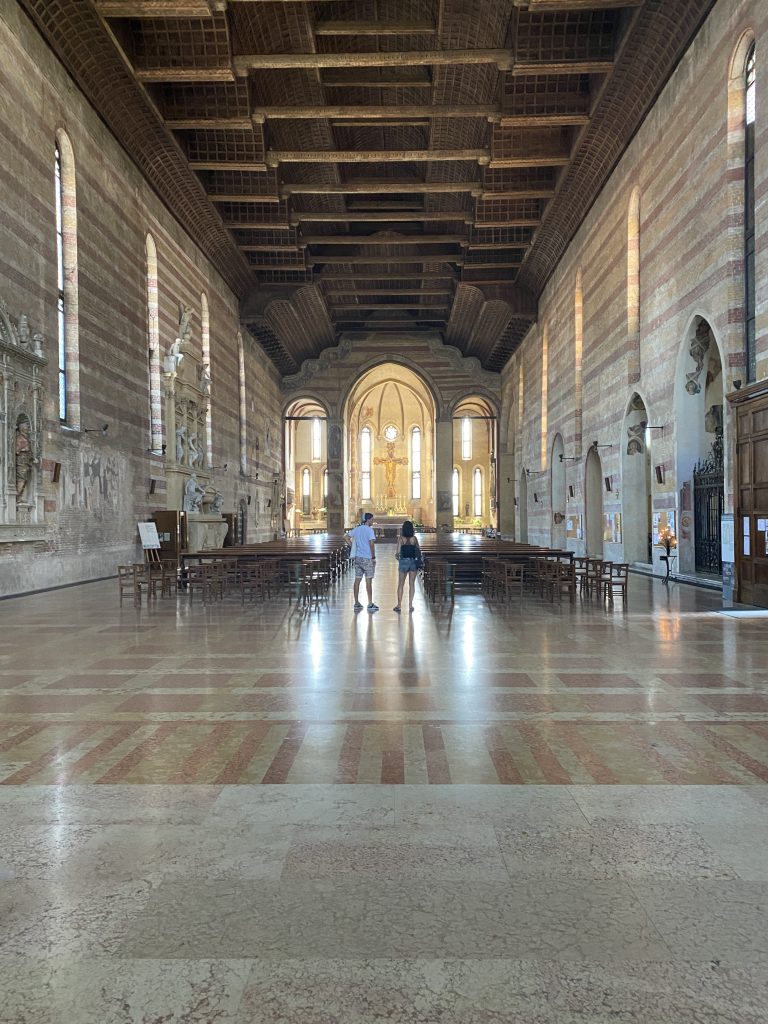


All great cities will have equally great street art and Padova is no exception to that rule. Theirs matches anything I have seen elsewhere although it is perhaps not so abundant. There is a fair amount of ‘Banksie’ style street art but my two favourites are those reproduced below (although I’m not sure if the excellent 3D painting qualifies as street art?)
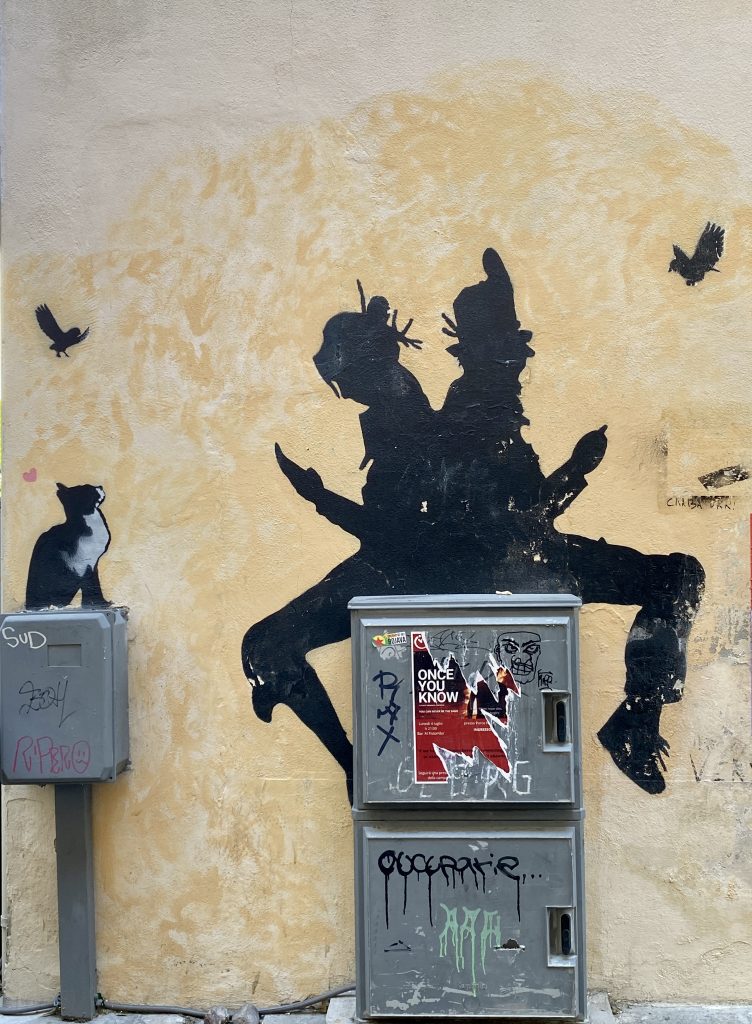

One place I missed during our brief stay in Padova and that I really wished I had visited is the Botanical Garden. On our last day, I stopped for a glass of barbera wine in a small family run cafe bar near the Porta o Portello. The place was closing for the weekend but I was joined by the whole family and invited to take a second (very large) glass of wine by the grandfather. With the eldest grandson translating the family then took turns asking me what I liked about Padova and what I had seen. They were impressed by the amount of ground I had covered and the grandmother was particularly pleased that I had visited all the principal churches (and she loved my photos of the Tomas Becket) but they were all aghast that I had not seen the Botanical Garden. Next time.
Oh, one other faily worthless piece of information. Did you know that Padova (or Padua) is the setting for William Shakespeare’s comedy ‘The Taming of the Shrew’?

